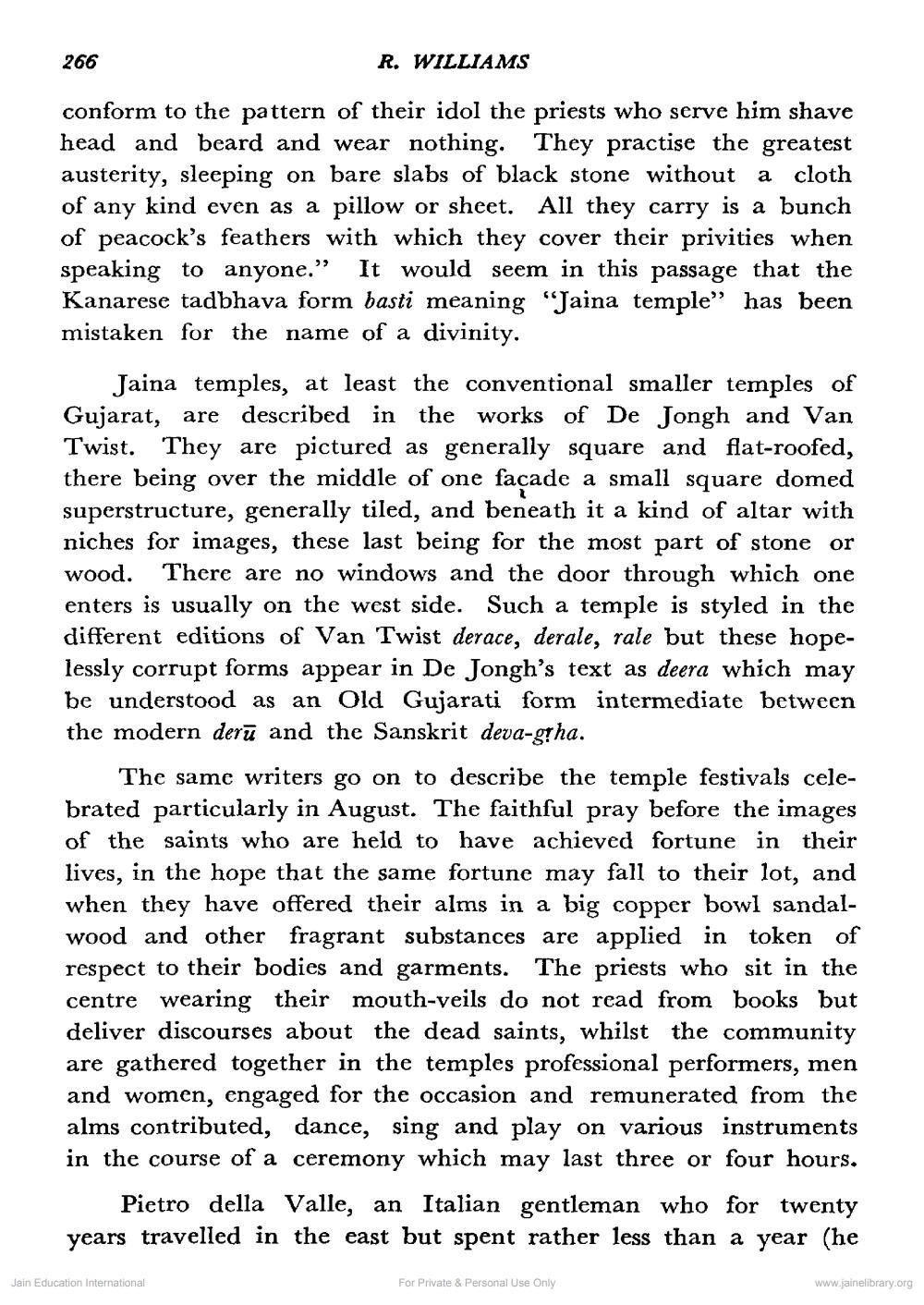________________
266
R. WILLIAMS
conform to the pattern of their idol the priests who serve him shave head and beard and wear nothing. They practise the greatest austerity, sleeping on bare slabs of black stone without a cloth of any kind even as a pillow or sheet. All they carry is a bunch of peacock's feathers with which they cover their privities when speaking to anyone.” It would seem in this passage that the Kanarese tadbhava form basti meaning "Jaina temple” has been mistaken for the name of a divinity.
Jaina temples, at least the conventional smaller temples of Gujarat, are described in the works of De Jongh and Van Twist. They are pictured as generally square and flat-roofed, there being over the middle of one facade a small square domed superstructure, generally tiled, and beneath it a kind of altar with niches for images, these last being for the most part of stone or wood. There are no windows and the door through which one enters is usually on the west side. Such a temple is styled in the different editions of Van Twist derace, derale, rale but these hopelessly corrupt forms appear in De Jongh's text as deera which may be understood as an Old Gujarati form intermediate between the modern derū and the Sanskrit deva-gha.
The same writers go on to describe the temple festivals celebrated particularly in August. The faithful pray before the images of the saints who are held to have achieved fortune in their lives, in the hope that the same fortune may fall to their lot, and when they have offered their alms in a big copper bowl sandalwood and other fragrant substances are applied in token of respect to their bodies and garments. The priests who sit in the centre wearing their mouth-veils do not read from books but deliver discourses about the dead saints, whilst the community are gathered together in the temples professional performers, men and women, engaged for the occasion and remunerated from the alms contributed, dance, sing and play on various instruments in the course of a ceremony which may last three or four hours.
Pietro della Valle, an Italian gentleman who for twenty years travelled in the east but spent rather less than a year (he
Jain Education International
For Private & Personal Use Only
www.jainelibrary.org




